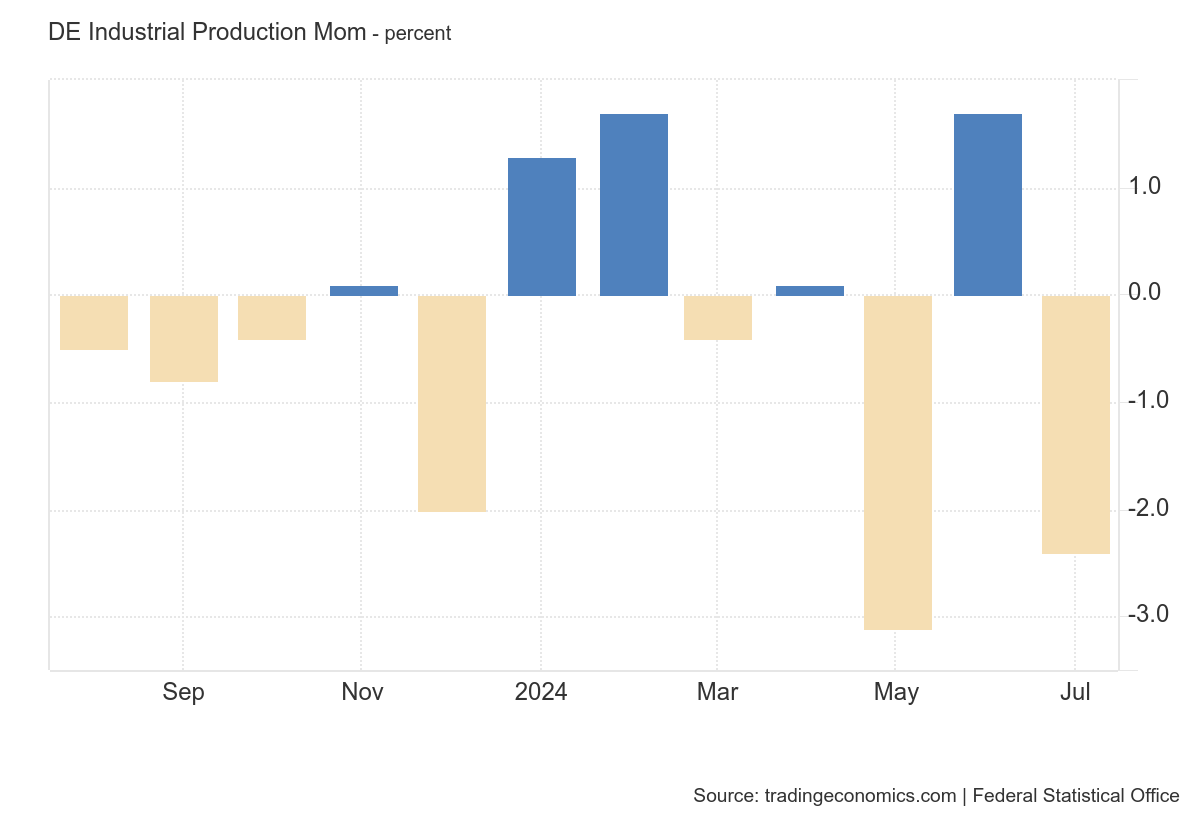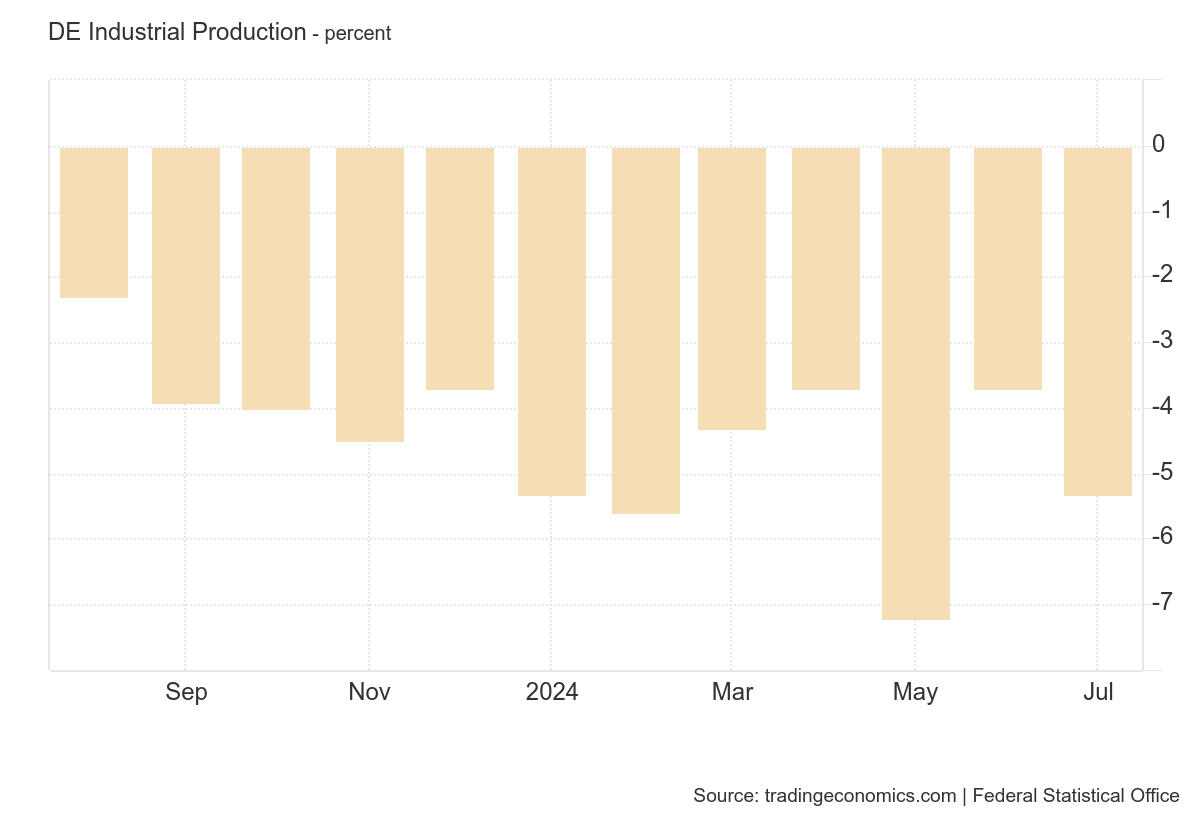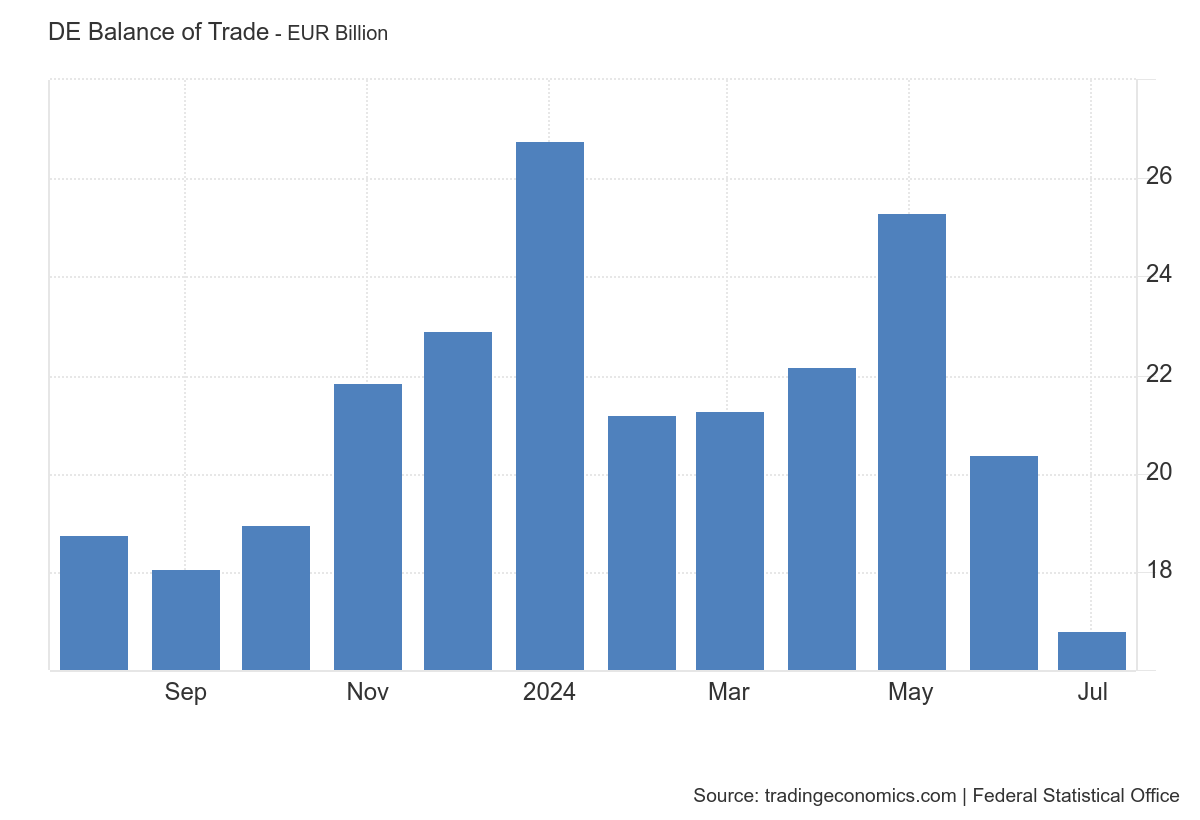Germany: the German model collapses. Industrial production and the trade surplus fall

The German model is imploding, crushed by high energy costs, demographic problems and a crisis in internal consumption, and today's latest data confirms the trend.
Let's start with industrial production , which is decreasing for the umpteenth month: in fact this decreased by 2.4% month on month in July 2024, compared to market estimates of a decrease of 0.3% and after growth of 1.7% revised upwards in the previous month .
This was the third year-on-year decline, driven mainly by the automotive industry (-8.1%), electrical equipment manufacturing (-7.0%) and metal products (-3.8%).
Production in the manufacturing sector, which excludes energy and construction, contracted by 3.2%. Additionally, energy production decreased by 1.9%. In contrast, construction activity increased by 0.3%.
At the same time, the production of capital goods was lower (-4.2%), as was that of intermediate goods (-2.8%) and consumer goods (-1.2%). The less volatile three-month-on-three-month comparison showed that production was 2.7% lower in the period from May to July 2024 compared to the previous three months. Here is the relevant graph:
On an annual basis, industrial production fell 5.3% in July, much steeper than June's 3.7% decline. There is not a positive sign in the last 12 months.
The German model was based on manufacturing that exported all over the world, generating significant trade surpluses. This phase is also over.
Germany's trade surplus narrowed to 16.8 billion euros in July 2024 from 20.4 billion euros in June, much smaller than forecasts of 21 billion euros.
It was the lowest trade surplus since December 2022, as exports grew less than imports. Exports rose 1.7% to 130 billion euros, the first increase in three months, recovering from a 3.4% decline in June, above forecasts for 1.2% growth. Shipments to the EU increased by 3.3%, while those to third countries decreased by 0.2%, with exports to the United States decreasing by 1.7%, while those to China and the United Kingdom fell by 8.0% and 2.7% each. In contrast, exports to Russia increased by 18.9%.
Meanwhile, imports grew 5.4% to a three-month high of 113.2 billion euros, following a downwardly revised 0.2% increase in June. Imports from the EU increased by 5.3%, while purchases from non-EU countries increased by 5.6%, in particular from China (6.6%) and the United States (5.3%), while they decreased in the United Kingdom (-4.5%) and Russia (-6.5%). For the first seven months of 2024, the country recorded a surplus of 156.5 billion euros. Here is the relevant graph:
The German government should be particularly concerned about the decline in non-EU exports to the USA, China and the United Kingdom, because this signals the lower competitiveness of German industry outside the EU. The drop in China is very strong, where the German car crashes.
As we said, the government should be worried, but it won't be, plagued by internal crises and the fear of losing power.

Thanks to our Telegram channel you can stay updated on the publication of new Economic Scenarios articles.
The article Germany: the German model collapses. Industrial production falls and the trade surplus comes from Economic Scenarios .
This is a machine translation of a post published on Scenari Economici at the URL https://scenarieconomici.it/germania-il-modello-tedesco-crolla-calano-la-produzione-industriale-e-lavanzo-commerciale/ on Fri, 06 Sep 2024 14:35:43 +0000.



